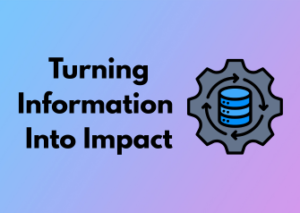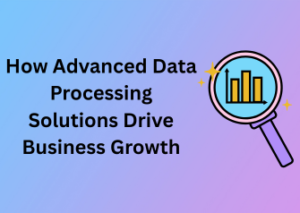Imagine this. You have a brilliant idea for a product or service that you believe everyone will love. But how do you know if people will actually want or need it? That’s where market research makes its grand entrance. At its heart, market research is all about understanding the people you want to serve – their desires, needs, and even the frustrations they navigate daily. Sounds simple, right? Well, there’s a bit more to it.
In essence, market research is the bridge between businesses and their target audience. It’s the process of gathering, analyzing, and interpreting information about a market, including things like consumer behavior, competitors, and trends. At its core, market research ensures you’re not launching your ideas into the void – instead, you’re making informed decisions based on real-world insights. It’s like unlocking a treasure chest of actionable knowledge!
Why Learn the Basics First?
Any training program for market research should begin by grounding learners in its core principles. Why? Because knowing the “why” behind market research makes everything else fall into place. Here’s a scenario: If you’re blindly collecting data without understanding the purpose, it’s akin to trying to bake a cake without a recipe. Sure, you might end up with a cake, but it probably won’t taste good!
When we talk about “the basics,” we mean understanding these foundational questions:
- What is the goal of market research? Whether it’s testing a new product concept, understanding customer demographics, or gauging brand awareness, having a clear goal is vital.
- Who is your audience? Knowing your target market – their age, preferences, income levels, behaviors – helps tailor your strategy effectively.
- What types of market research exist? Broadly speaking, research can be categorized into two main types: primary (data collected directly from consumers) and secondary (analyzing existing data).
Making the Basics Fun and Relatable
You might think, “Basics sound boring!” But that’s where creative training can spice things up. For instance:
- Have learners create short case studies. They could take a well-known product or company and brainstorm how market research might have guided those initial decisions.
- Introduce role-playing scenarios where participants act as frustrated customers while others act as research professionals piecing their feedback together. It’s interactive and insightful!
- Use real-world examples from brands learners know and love to demonstrate how market research improves decision-making. Think about how Netflix uses viewer data to suggest shows – it’s market research in action
Identifying Key Skills: What Do Professionals Need?
Market research is a dynamic and essential field, but to be truly effective, professionals need to arm themselves with a set of critical skills. After all, the goal isn’t just to collect data—it’s to extract insights that drive action. So, what does it take to excel in this world of numbers, trends, and consumer behavior? Let’s break it down into some must-have skills that can set any market researcher up for success.
1. Analytical Thinking
This one may feel like a no-brainer, but it really can’t be overstated. Market researchers are, at their core, detectives on a mission to make sense of raw data. Analytical thinking is the foundation that allows professionals to sift through piles of numbers and statistics and uncover patterns and actionable insights.
If you’re training to excel in market research, focus on improving your ability to examine complex data sets methodically. Look for meaning in the numbers while thinking critically about the bigger picture. Remember: it’s not just about the ‘what’ but also the ‘why.’

2. Communication Skills
What good is an incredible insight if you can’t communicate it effectively? Market researchers need to be skilled storytellers, explaining their findings to people who may not have a background in data analysis. This means presenting your data in simple, relatable, and impactful ways—whether it’s in a meeting, a report, or a presentation.
A good tip? Learn to build compelling narratives around your findings. People remember stories. Consider honing your skills in creating clear and visually appealing reports, too—think charts, graphs, and infographics—because a visual aid can often convey more than words alone.
3. Mastery of Technology and Tools
The market research world relies heavily on technology, so it’s crucial to stay ahead of the curve. Professionals are expected to be comfortable using industry tools like SPSS, Tableau, or Google Analytics, as well as performing basic data cleaning tasks in Excel or more advanced analytics using programming languages like Python or R.
A pro tip here is to focus your training on the most widely used platforms and continually seek updates to improve your proficiency. The tech world moves fast, and so should you!
4. A Curious Mindset
Curiosity doesn’t come from a training manual, but it’s a skill every market researcher needs to cultivate. The best insights often come from asking just the right questions—step outside the obvious and dig deeper. When designing surveys or analyzing results, curiosity can help uncover angles others may overlook.
To foster curiosity, challenge yourself to ask why something is the way it is or what might be influencing a particular consumer trend. Stay actively curious, and you’ll always bring fresh perspectives to the table.
5. Problem-Solving Abilities
Market research isn’t merely about understanding data—it’s about solving real-world business problems. Professionals should be able to connect consumer behavior and industry trends to what a business actually needs to succeed. This requires strategic thinking and creativity. While the data may tell part of the story, solving specific challenges will require you to think outside the box.
A Quick Recap: Blend Skills for Success
- Think analytically to make sense of data.
- Communicate clearly for maximum impact.
- Master the tools of the trade to stay tech-savvy.
- Nurture curiosity to uncover deeper insights.
- Become a problem-solver to translate insights into actions.
Training Gaps: Where Do Learners Often Struggle?
When it comes to market research training, learners often enter with enthusiasm, only to hit unexpected speed bumps along the way. Let’s face it: mastering market research isn’t always smooth sailing. That’s okay! Recognizing where learners commonly face challenges gives us the chance to bridge those gaps and empower professionals to excel in the field. So, where exactly are they struggling?
1. Moving from Theory to Action
One of the biggest hurdles learners face is applying theoretical knowledge to practical scenarios. Market research is filled with terms, methodologies, and frameworks, but knowing how to use these tools in real-world situations can feel overwhelming. Many learners understand the definitions of surveys, focus groups, or quantitative and qualitative methods, but translating that knowledge into usable insights often requires more hands-on guidance.
Pro Tip: Practice makes perfect! Incorporate case studies and real-life examples into training to help learners connect abstract concepts with tangible applications.
2. Data Overload: Making Sense of the Numbers
Another challenge is dealing with the massive influx of data often encountered in market research. Beginners may panic when faced with spreadsheets full of numbers, charts, and unstructured information. The ability to sift through the noise and find actionable insights — that’s a real skill, and it doesn’t come naturally to everyone.
Solution? Be sure to spend more time teaching data analysis techniques! Breaking down the process step by step (e.g., identifying trends, finding key patterns) can reduce learner anxiety. Tools like Excel, Tableau, or Google Data Studio can help simplify data visualization, making the process less intimidating.
3. Asking the Right Questions
Designing effective questions for surveys or interviews is another common weak spot. Many learners lack the experience to craft open-ended and unbiased questions that elicit useful, reliable data. Without the right foundation, market research can yield poor-quality results, making the entire process feel like a waste of time.
Expert Tip: Emphasize training around research objectives. Start by helping learners understand the “why” behind their questions before diving into the “how.” A well-defined purpose will naturally lead to better phrasing and clarity.
4. Bridging the Gap Between Insights and Decisions
Learning how to conduct market research is one thing, but many trainees struggle with the final step: taking those findings and presenting them in a meaningful, actionable way. Communication is key here, yet it’s a skill that often doesn’t get the attention it deserves in market research training.
How to fix it? Incorporate storytelling into your training strategies. Teaching learners to present findings through simple yet engaging narratives can make their insights stand out to decision-makers. Help them practice turning raw data into business recommendations.

5. Confidence in Their Skills
Finally, many learners struggle with confidence. Market research often feels vast and intimidating, especially to newcomers. The fear of making mistakes, misinterpreting data, or failing to deliver relevant insights can prevent professionals from truly stepping into their roles.
Encouragement Works Wonders: Build confidence by fostering a safe learning environment where mistakes are okay. Emphasizing continuous learning and growth as part of the job can go a long way toward helping learners feel capable.
Tools and Techniques That Matter Most
When it comes to market research, the tools and techniques you use can make or break your ability to gather accurate insights. Different businesses have different needs, but there are a few tried-and-true approaches and technologies that everyone in the field should consider mastering. Let’s break it down step by step!
Why Tools Matter for Market Research
Think of market research tools as the gears in a well-oiled machine. They help professionals collect, analyze, and interpret data faster and more accurately. Without these tools, even skilled researchers could waste valuable time, miss key patterns, or worse—a misstep could lead to faulty business decisions.
Whether you’re conducting surveys, diving into competitor analysis, or predicting customer behavior, using the right tools ensures you’re working smarter, not harder.
Top Market Research Tools You Should Master
Market research tools are constantly evolving, and knowing which ones to use depends on your project goals. Here are some popular categories and recommendations:
- Survey Tools: Platforms like SurveyMonkey, Google Forms, or Qualtrics make creating, distributing, and analyzing surveys a breeze.
- Social Listening Tools: Brands thrive when they understand real-time conversations. Tools like Brandwatch and Hootsuite Insights unlock valuable consumer sentiment insights from social media platforms.
- Data Analytics Software: Tools such as SPSS, Microsoft Power BI, or Tableau are essential for digging deep into data and visualizing trends.
- Competitor Analysis Platforms: Want to know what your rivals are up to? Tools like SEMrush and SimilarWeb provide in-depth insights into market positioning and competitor performance.
- Qualitative Research Tools: For a deeper understanding of customer habits and thoughts, qualitative platforms like dscout and Recollective make focus group discussions smooth and engaging.
Techniques That Will Level Up Your Market Research
Beyond the tools, having the right techniques in your toolkit ensures your market research delivers valuable insights. Here are some essential methods to focus on:
- Sampling: Understanding how to identify a representative audience is key. Using techniques like random sampling, stratified sampling, or convenience sampling lets you avoid bias and ensures your data speaks for the right group of people.
- Survey Design: Crafting a perfect survey goes beyond asking questions. Learn to balance open-ended vs. closed-ended questions, reduce leading language, and avoid survey fatigue to keep responses meaningful.
- Data Analysis: Data by itself doesn’t hold value—it’s what you do with it. Knowing how to clean data (removing duplicates or errors), identify trends, and interpret patterns will set your research apart.
- Customer Interviews: Techniques like laddering questions—starting broad and moving to specifics—encourage participants to share insights you might otherwise overlook.
Tips to Keep in Mind When Choosing Tools
With so many options on the market, how do you decide which tools are the best fit? Here are a few expert tips:
- Budget: Some tools offer free versions, while others might be a hefty investment. Pick tools that align with your budget while fulfilling your needs.
- Ease of Use: Look for user-friendly platforms, especially for teams with varying levels of tech expertise.
- Scalability: Choose tools that grow with your needs; you don’t want to outgrow your software six months in.
- Integration Capabilities: Ensure the tool can integrate seamlessly with your existing systems or platforms (CRMs, analytics dashboards, etc.).
Tailoring Training to Industry-Specific Needs
Let’s talk about something that really matters when it comes to training for market research: understanding that not every industry is the same. Imagine trying to teach the same set of skills to someone in the tech industry and someone in fashion retail. It just wouldn’t fit! That’s why tailoring training to industry-specific needs isn’t a “nice-to-have” – it’s a must.
Why Does Industry-Specific Training Matter?
Market research is an incredibly broad field, and while certain foundational skills like data analysis, survey creation, or customer behavior understanding are universal, the way these skills are applied can vary drastically. For example:
- Healthcare: A highly regulated sector where compliance and confidentiality are critical. Here, market research training needs to focus on ethical guidelines, patient privacy, and working within a strict legal framework.
- Retail and E-commerce: This sector demands a stronger emphasis on understanding consumer behavior trends, pricing strategies, and seasonal buying habits.
- Technology: Rapid innovation means market research often explores tech adoption cycles, competitive landscapes, and disruptive trends.
Trying to use a “one-size-fits-all” training program just isn’t efficient – or effective. Instead, creating tailored programs hits the sweet spot between relevance and impact.
How Do You Make Training Industry-Specific?
So, how do organizations ensure their training aligns with specific industries? Here are the key steps:
- Start with Research: Yes, more research is required! Identify the unique nuances of the industry you’re designing training for. What are the common challenges professionals face? Which trends matter most in this space? Dive into industry reports, talk to professionals in the field, and pull real-world case studies.
- Customize Content: Once you know what matters, tweak your training materials. Replace generic examples with industry-relevant scenarios. For instance, case studies for the energy sector might focus on clean energy trends, while training for media might highlight audience engagement techniques.
- Invite Industry Experts: Collaboration is key. Bringing in professionals with hands-on experience in the specific field can add a layer of authenticity. Their insights will resonate with learners and make the material more dynamic.
Key Benefits of Tailored Training
Let’s not forget the payoff here. When training is designed with specific industries in mind, everyone wins. Here’s how:
- Increased Engagement: Learners are more likely to stay engaged when they see the direct application of concepts to their daily work.
- Improved Retention: By showing how the training solves real-world problems, participants are likely to hold onto the knowledge longer.
- Enhanced Job Performance: Tailored training equips teams with actionable, sector-specific strategies to deliver stronger results.
Incorporating Real-World Scenarios: Learning Beyond Theory
Let’s face it: market research is complex, dynamic, and filled with twists and turns. Training programs often focus heavily on theory—and while foundational knowledge is important, it’s hardly enough. To truly equip professionals with what they need, trainers should go a step further and embrace the magic of incorporating real-world scenarios.
But what does that mean in practice? Let’s dive in.
Why Theoretical Learning Falls Short
Imagine being in a lecture where you learn about survey techniques or data analytics tools. You might understand the “how” and “why,” but when it’s time to execute those steps in real life, you feel stuck. The gap here lies in bridging theoretical concepts with real-world application. In market research, there’s rarely a “one size fits all” answer. Nuance plays a vital role in applying principles effectively on the job.
That’s why incorporating real-world examples into training is a game-changer. It transforms passive learners into active participants who feel equipped to face challenges head-on.
Creating Immersive, Scenario-Driven Learning
Think of your training sessions like an interactive journey. Instead of just teaching learners about creating a focus group, present them with this challenge:
“You work for a growing tech company that wants to launch a new wearable. Your task is to identify the target audience’s habits and pain points through a focus group. What questions will you ask? How will you recruit participants?”
This type of engagement gives learners an opportunity to think critically and make decisions in a controlled environment. They’re not just memorizing steps—they’re solving problems, the same way they would in the field.
Here are some specific tips to make scenario-based training effective:
- Use case studies from real businesses. For example, analyze a company that made a smart pivot because of market research insights—and one that missed the mark.
- Create role-playing exercises. Assign roles, such as the client, marketer, or consumer, and let teams tackle a simulated research project together.
- Apply data analysis labs. Provide actual raw data sets and ask participants to produce actionable insights within a time limit.
The Power of “Learning by Doing”
If there’s one lesson we’ve learned from educational psychology, it’s this: people retain more when they actively engage. Simply listening to someone talk about market trends won’t make statistics come alive, but interpreting a messy, real-time dataset will.
When learners dive into practical tasks—like refining survey questionnaires based on poorly received feedback—they experience an authentic learning curve. Sure, they might fumble at first, but that struggle is crucial for growth.
Preparing for Challenges in the Real World
It’s worth remembering that the real world isn’t a sterile, controlled environment. Budgets change. Clients have unique demands. Sometimes respondents give unexpected answers. By incorporating these complexities into training, you set learners up for success when they face these hurdles for real.
You can even up the ante by introducing unforeseen variables during workshops. Maybe the focus group results contradict the company’s presumptions. Or perhaps unexpected feedback suggests a need to tailor outreach strategies. These curveballs keep training dynamic and closely mimic real-world unpredictability.
Evaluating the Effectiveness of Your Training Program
So, you’ve built a training program aimed at sharpening market research skills. It sounds impressive on paper, but here’s the million-dollar question: is it actually working? Evaluating the effectiveness of your training program is just as crucial as designing it in the first place. Let’s break it down and explore how you can effectively measure success in a practical and approachable way.
Why Evaluation Matters
Think of your training program like an investment—you’re putting in time, effort, and resources. Proper evaluation ensures you’re seeing valuable returns. Beyond that, it can help you identify what’s working, what’s not, and where you might need to tweak things for better results.
Plus, when participants feel the program is impactful, they’ll be more engaged and enthusiastic about learning. Everybody wins.
Key Metrics to Track
When it comes to evaluating training programs in market research, it’s all about finding meaningful metrics to measure success. Here are some practical ways to do that:
- Participant Feedback: Never underestimate the power of direct feedback! Conduct post-training surveys or interviews to gather insights on what participants found valuable—or lacking.
- Skill Improvement: Set up pre- and post-training assessments to track improvement. If learners are demonstrating a better grasp of market research concepts or tools, that’s a major win.
- Application to Real Projects: Are participants actually applying what they learned? Measure their ability to implement new skills in ongoing market research projects.
- Employee Retention and Engagement: For organizations sponsoring training, improved employee satisfaction and longevity can be good indicators of a successful program.
Leverage Practical Tools for Measurement
You don’t have to reinvent the wheel when it comes to tracking your program’s success. Consider these tools:
- Learning Management Systems (LMS): Many LMS platforms come with built-in reporting tools to help you analyze participant progress and engagement.
- Quizzes and Assessments: Regular quizzes can gauge how well the cohort is absorbing the material.
- Case Studies: Provide learners with real-world scenarios to solve before and after training. Compare results to see the impact.
Refining Your Approach
Evaluation isn’t just about tracking success—it’s also about pivoting when needed. If participants are consistently struggling with a certain concept or tool, it might mean you need to rethink how that material is being taught. Great training evolves based on data and feedback.
This can also include diving deeper into specific aspects of market research (e.g., competitor analysis or consumer behavior) if learners express interest in those areas. Stay responsive and adaptive!
Celebrate the Wins—Big and Small
Last but not least, don’t forget to celebrate progress! Showcase your program’s achievements, whether it’s a 20% improvement in knowledge retention or an inspiring success story from a participant who’s now acing real-world projects.
In the end, evaluating your training program is a dynamic process, not a one-and-done event. Armed with feedback and actionable data, you’ll not only ensure your program remains relevant but also build an incredible learning experience that participants genuinely value. And isn’t that what market research is all about—unpacking insights to make smarter, more impactful choices?
“`











